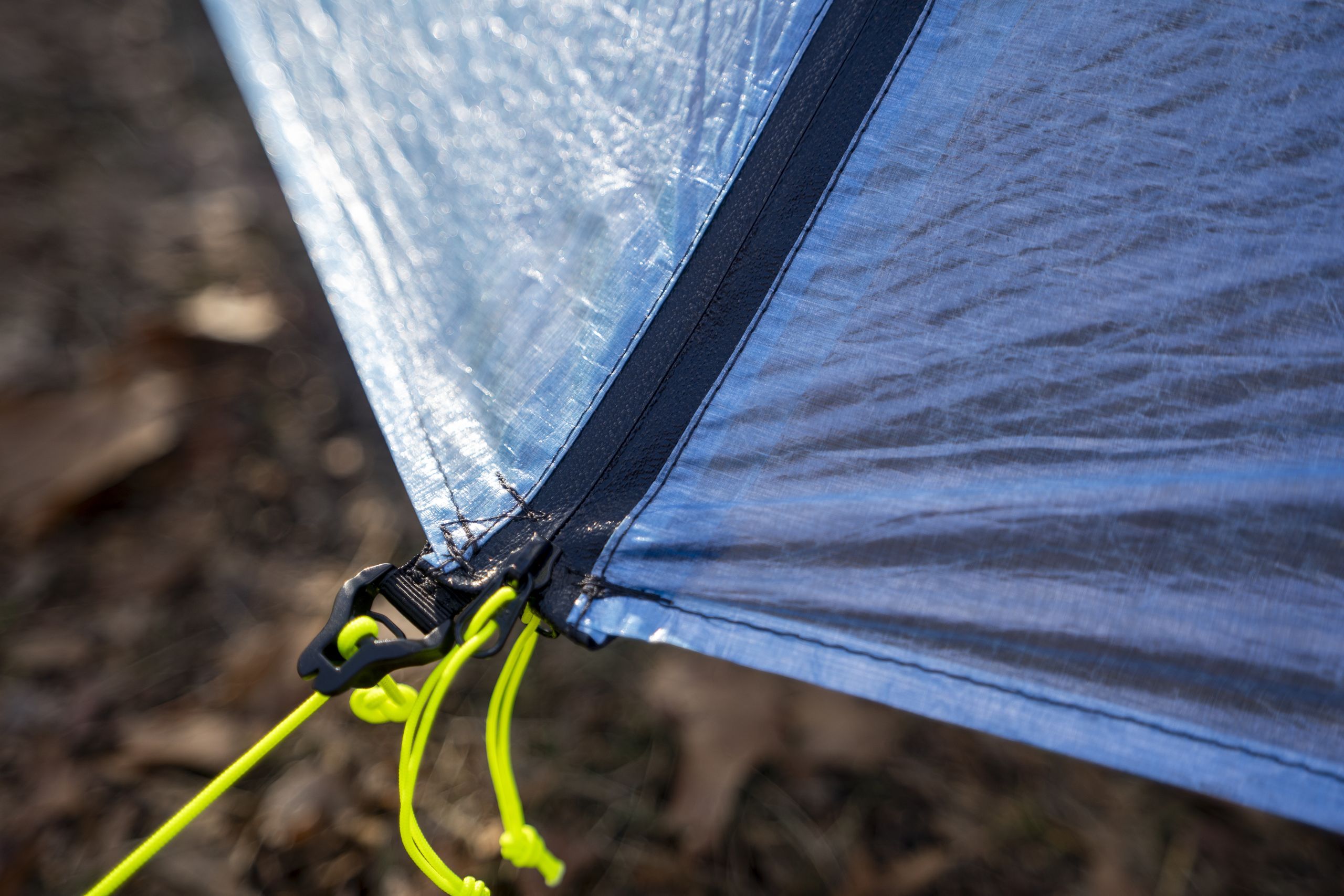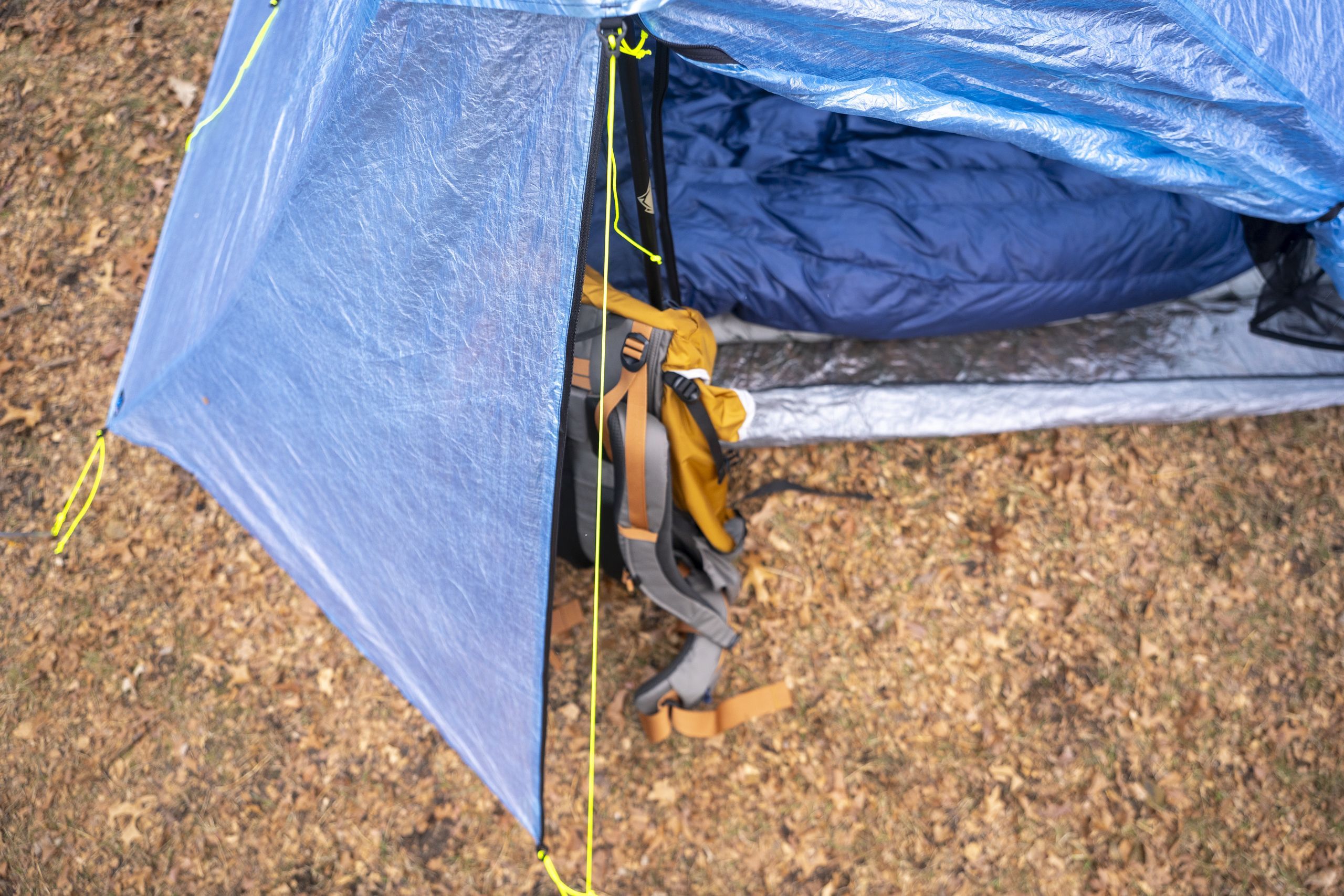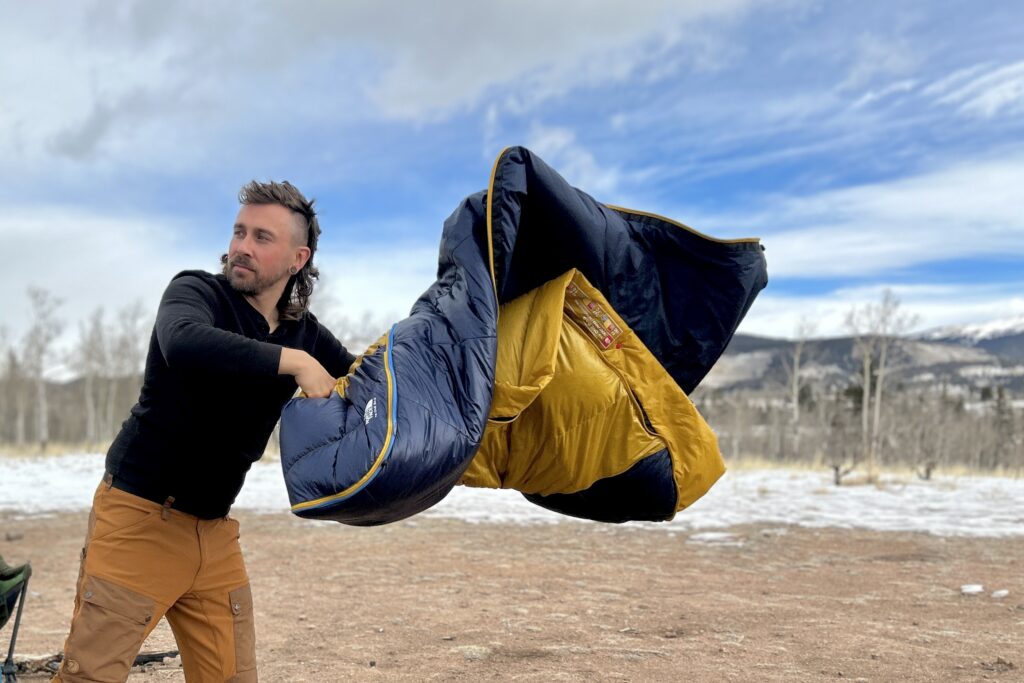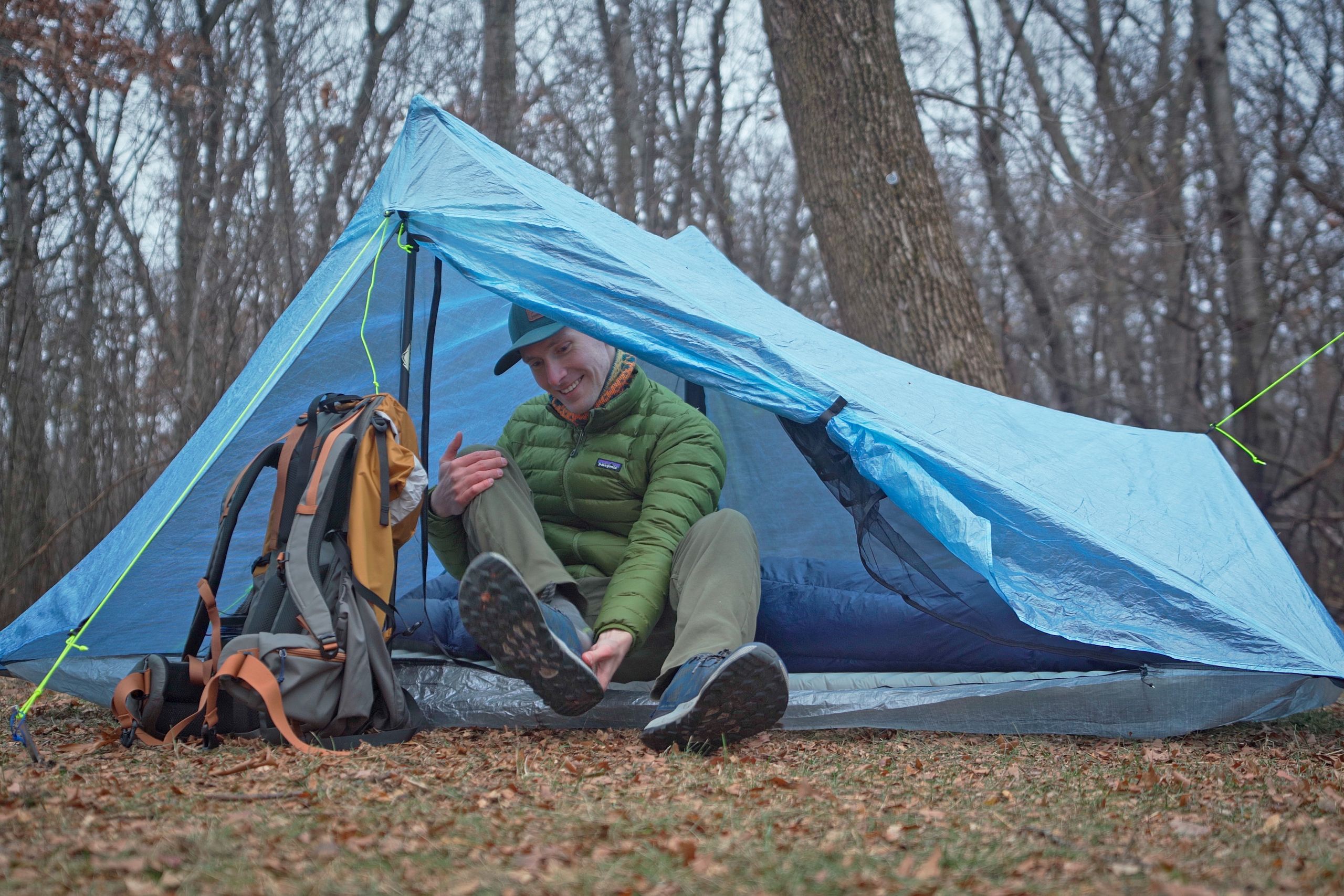
Bottom Line
For an excellent long-distance shelter for thru-hiking, the Zpacks Offset Duo impressed us at every turn, becoming one of our favorite ultralight tents that we tested. It’s difficult to evaluate this tent without comparing it to the legendary Zpacks Duplex, which has been a staple on thru-hikes for years. The Offset Duo makes a strong case that it’s a better shelter for more people than the old classic. And we agree.
Starting with interior livability, the 32.6 square feet of floor space is more usable than other A-frame style shelters due to the exterior pole that lifts the large front panel away from the foot area. The switch to L-shaped doors is a welcome change from the rainbow doors Zpacks used for years, and the addition of peak vents greatly improves breathability now that the rainfly extends closer to the ground.
When testing this in the local forests in the Midwest, we loved the spacious feeling of the interior, particularly not worrying about a wet footbox or having our heads brush the walls. The Offset Duo should be comfortable for people up to 6 feet tall, and although we didn’t test heights above that, Zpacks rates it for individuals up to 6’6” tall.
The biggest downside is its expense, even for a Dyneema Composite Fiber (DCF) tent. It’s among the most expensive we tested in our lineup, but it’s worth noting that this tent is laser-focused on long-distance thru-hikers who will use it night after night for months on end. It represents a worthwhile investment for that purpose or for those who prioritize performance over price in their gear selection process. Additionally, it’s not our favorite tent for windy storms due to its large front panel, but it should handle the most common weather conditions with ease.
What we’re left with is a tent that delighted us during testing. It’s roomy, lightweight, well-made, and would be a great choice for sharing with someone on a long adventure.
Quick Specs
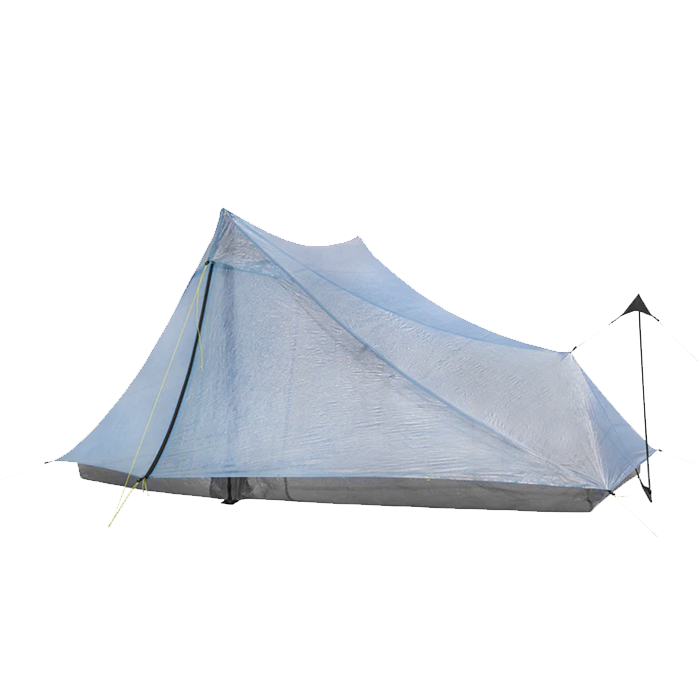
Zpacks Offset Duo
Best Balance of Comfort & Weight for Two
CleverHiker Rating: 4.7/5.0
Price: $799
Weight: 1 lb. 5.1 oz.
Dimensions (LxWxH): 94 x 50/44 x 48 in.
Floor Area: 31.4 sq ft
Pros
- Great interior space
- Super lightweight
- Good vent designs
- Clever panel pull design
Cons
- Higher rainfly perimeter height than competing tents
- Expensive

Comfort
After years of the Zpacks Duplex being branded as a “two person” tent but primarily used by one, we’re pleased that the Offset Duo’s slight adjustments to a classic design have resulted in significant gains in comfort. This tent comfortably accommodates two people, end of story. There’s a reason we’re beginning with a comparison to the Duplex. The Offset Duo feels like a thoughtful response to perhaps the most popular ultralight tent of all time, aiming to create a tent where “two people can actually be comfortable.” It updates the design choices, replaces a few features, and ultimately leaves us with a winning product.
The biggest change is the offset poles. In a classic A-frame, the trekking poles are positioned in the middle of the tent body, creating a symmetrical design that reduces both headroom and footroom. The Offset Duo shifts this high point to one side, providing significantly more headroom, and utilizes a short exterior carbon fiber pole connected to a panel pull to increase footroom.
This adjustment greatly enhances the livability of the tent. With a floor space of 32.6 square feet and a peak height of 48 inches, the resulting interior is spacious enough for two people.
The improvements extend to the door designs. The trekking poles aren’t positioned in the middle of the doorway, enabling easier entry and exit, and they also accommodate large L-shaped doors. We love this design, as it allows for unzipping just the bottom section to quickly grab something in the vestibule without letting in a ton of bugs, and we never have to worry about netting falling to the ground as with top-separating rainbow door designs. The vestibules are large and spacious, providing ample gear storage, and the water-resistant #3 zippers feel wonderful.
We managed to fit two standard 20-inch sleeping pads and two 3-season quilts inside without any issues. When adjusting the quilt ends to a comfortable distance from the exterior walls, we still had a comfortable amount of headroom for someone around six feet tall.
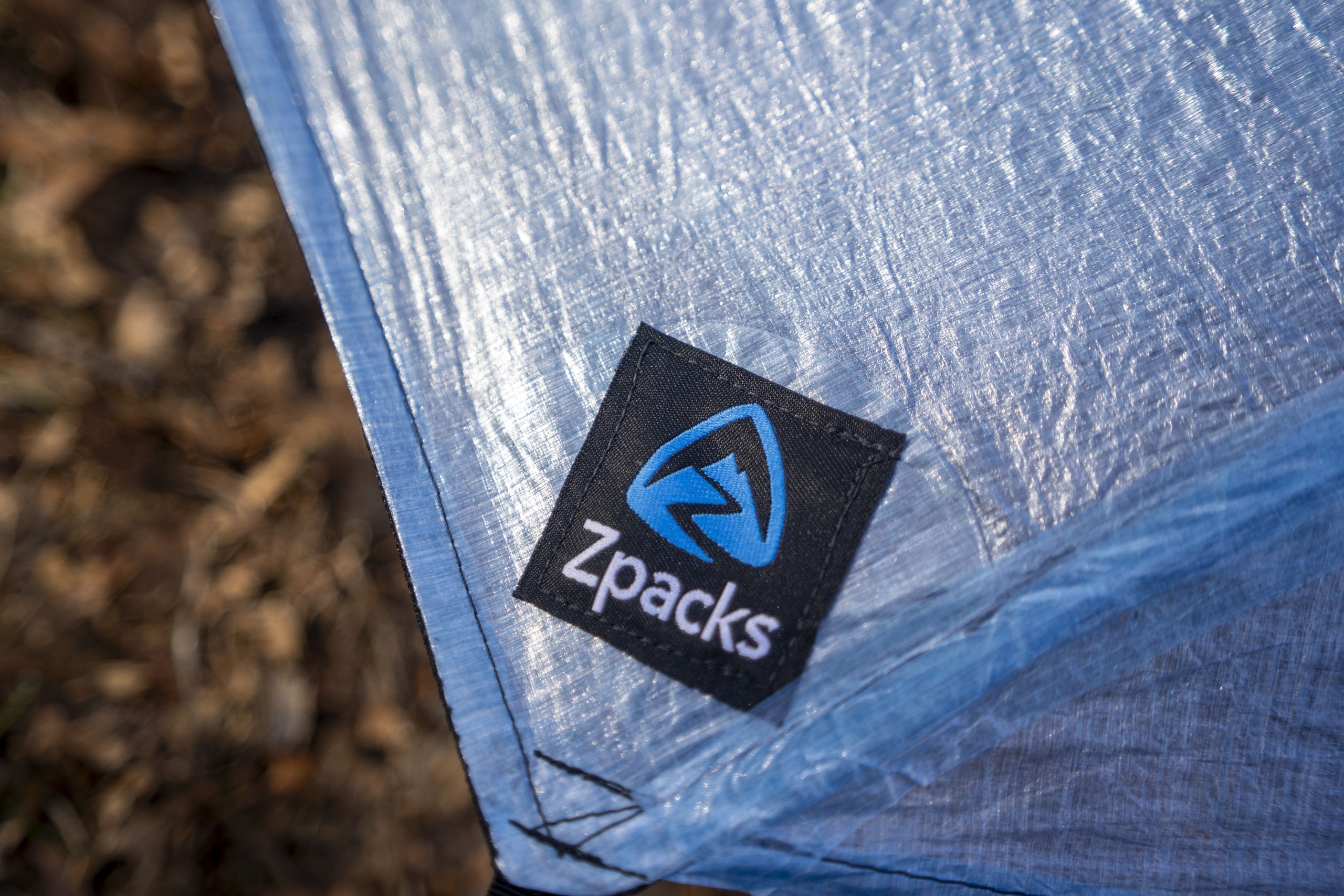
Weight
The most appealing thing about the Offset Duo is its incredibly low weight of 21.1 ounces. This can be reduced by one ounce by omitting the end pole and using a spare trekking pole, which we suspect most people will have since this is a two-person shelter.
We recognize the value of having a dedicated pole here, and we’re glad Zpacks included it. Exposed trekking pole handles are notorious for attracting the unwanted attention of deer and other animals that find the salt from our sweat in the cork or foam handles delectable. An extra ounce for that peace of mind in a known problematic area seems like a fair trade.
The Offset Duo uses Dyneema Composite Fiber (DCF) fabric throughout its construction to achieve an incredibly low weight. The standard configuration features 0.55oz/sqyd DCF for the fly and 1.0oz/sqyd for the floor; however, you can order it with a thicker 0.75oz/sqyd DCF for the fly to provide extra peace of mind.
Still, we believe that an upgrade is unnecessary for most users. The standard weights have been utilized in Zpacks tents for years without issue and have endured many thru-hikes.
While DCF is lightweight, it is unfortunately a rather bulky material, and Zpacks rates the packed size at 6×13 inches when rolled casually. This is larger than competing silnylon or silpoly shelters, but considering the other benefits of DCF, we believe it’s a minor issue that most people won’t mind.
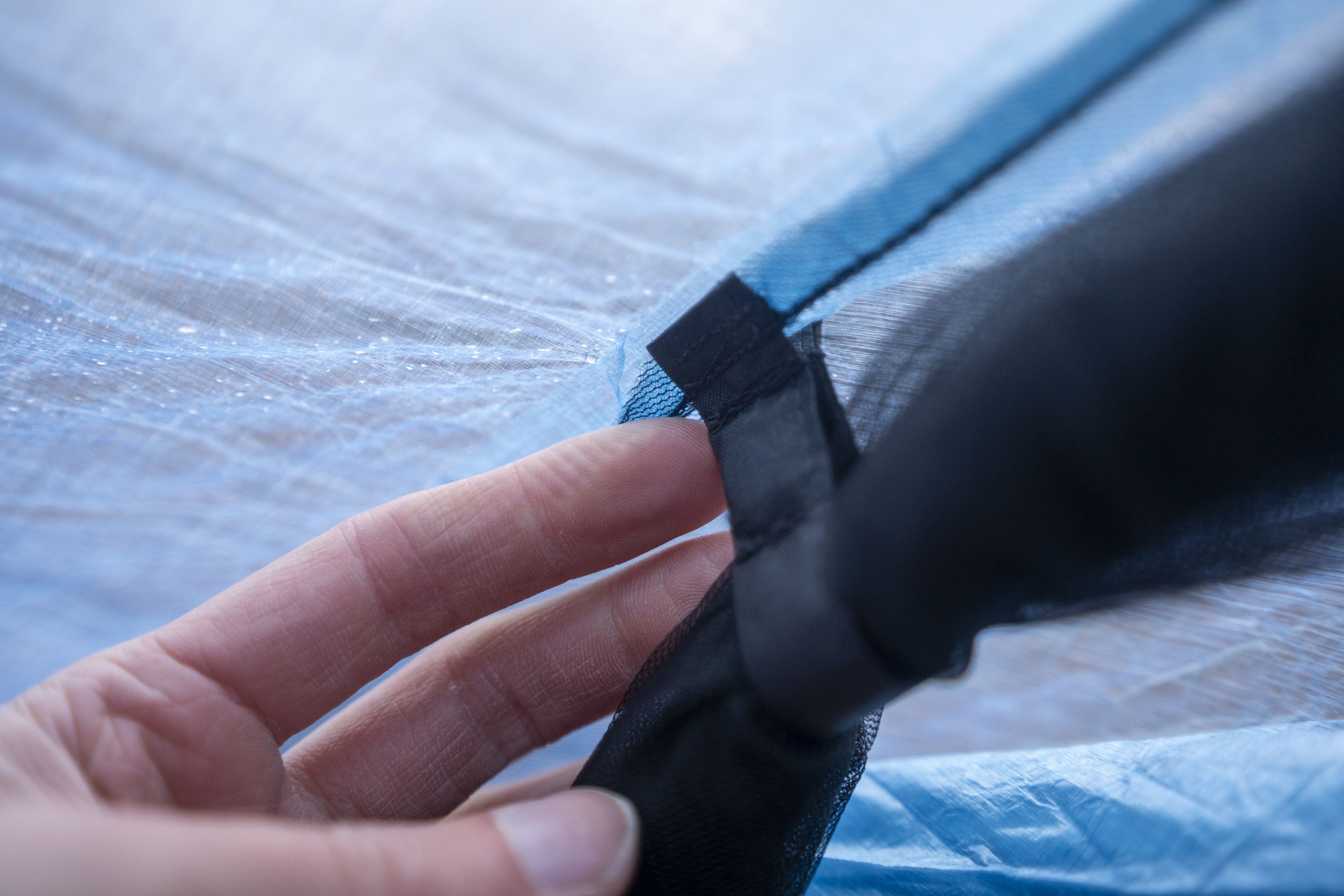
Ease of Use
Despite the deviations from the classic A-frame design, we found the Offset Duo equally easy to use. Setup was straightforward, using four corner stakes to secure the doors and two trekking poles at the peaks. Both the vent and door connect to the same stake with a guyline, which can be a bit fiddly at times, but that’s a minor nitpick that should become second nature over time.
The offset trekking poles also make getting in and out of the tent a breeze, thanks to the large rainfly and net doors. Speaking of those doors, the magnetic closure mechanism is excellent here too, snapping together with a satisfying click.
If you are transitioning from a traditional pole tent to a trekking pole style like this one, it will take some time to adjust to how these types of shelters pitch. We recommend practicing before taking a tent like this on an adventure, but once you master the fundamentals, we find it just as fast (if not faster) than a traditional pole tent.
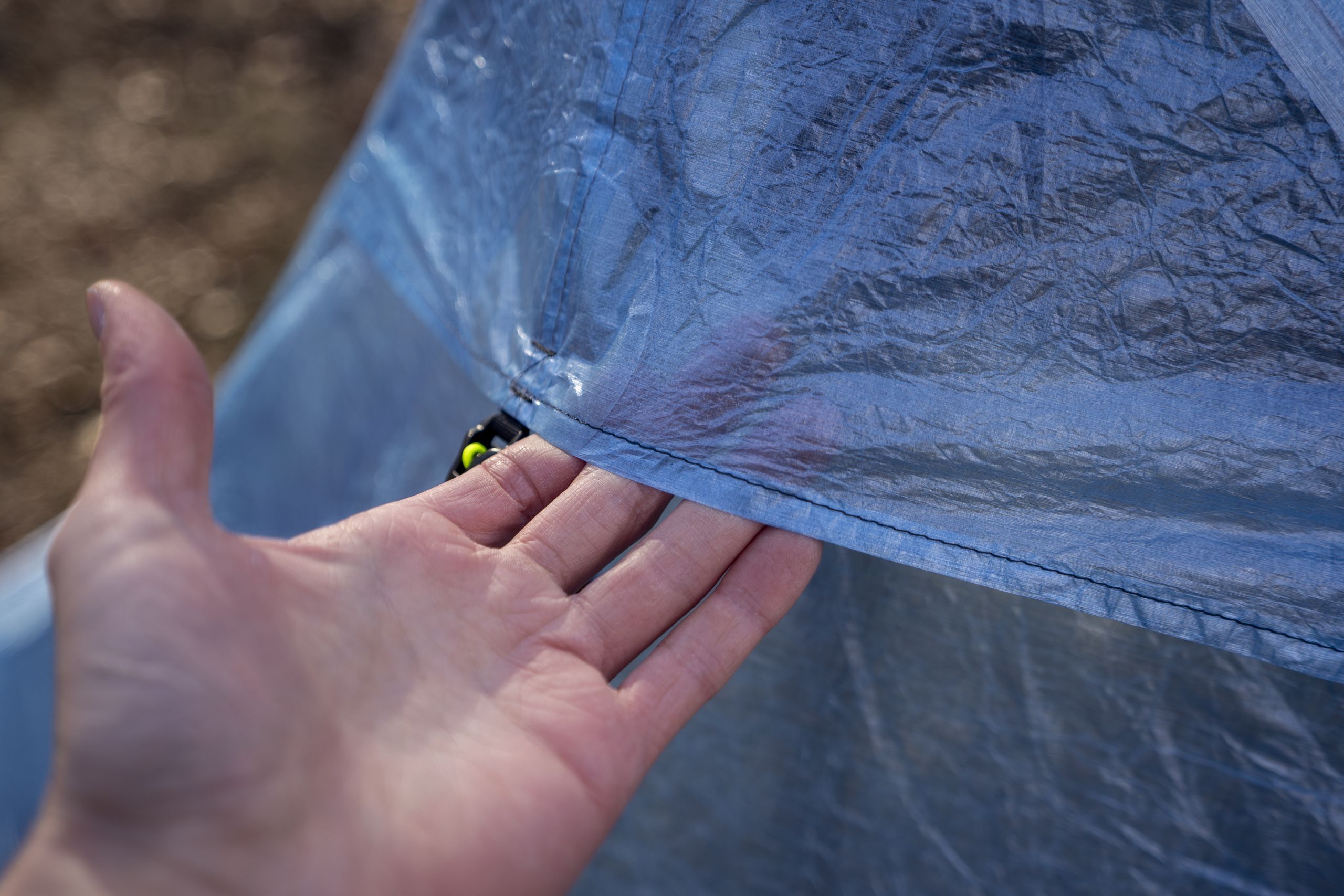
Weather Resistance
DCF is one of the strongest fabrics available, making this a good tent for weathering storms. It doesn’t stretch or sag in the presence of water, ensuring a secure pitch that should last as long as your stakes hold firm. The only downside is the large exposed panel on the front. Although the geometry is better broken up by the foot pole than if it weren’t there, it’s still a substantial section of fabric that will catch the wind. This isn’t enough to deter us from taking the Offset Duo on a long trail, but it wouldn’t be our first choice for a trail known for being very windy.
We wish Zpacks had included some attachment points at the peaks for guy lines. During harsh weather, these can significantly enhance tent stability. Unfortunately, the easy setup we mentioned earlier doesn’t apply when preparing the tent for a storm. If you anticipate inclement weather, a trekking pole tent like this will require more time to set up properly, as it lacks the consistent internal structure of a traditional pole tent.
You’ll spend more time checking the tension of the fabric panels and adjusting stakes to ensure that all parts of the tent are adequately tensioned. The good news is that once everything is pitched well, trekking pole tents can withstand some pretty severe gusts; they just require a bit more effort to reach that point. Since this tent primarily targets long-distance trail hikers rather than being specifically designed for harsh weather, we believe the level of weather resistance is appropriate.
The vestibules pitch lower to the ground than other Zpacks tents, which should help significantly with splashback in rain. Splashback occurs when rain falling on the ground next to the tent splashes under the rain fly and onto the tent. It can also splash tiny flecks of mud onto gear, which can add up to a soiled backpack and shoes over the course of the night.
While they still don’t go as low as we’d prefer for optimal protection, they’re definitely better than what we’ve seen with other tents. These lower vestibule heights do sacrifice some airflow, but fortunately, the Offset Duo has a good vent design that we believe more than compensates for this. The two vents are large, and although they’re not particularly deep, they’re held open by a guyline, which we find to be a clever feature.
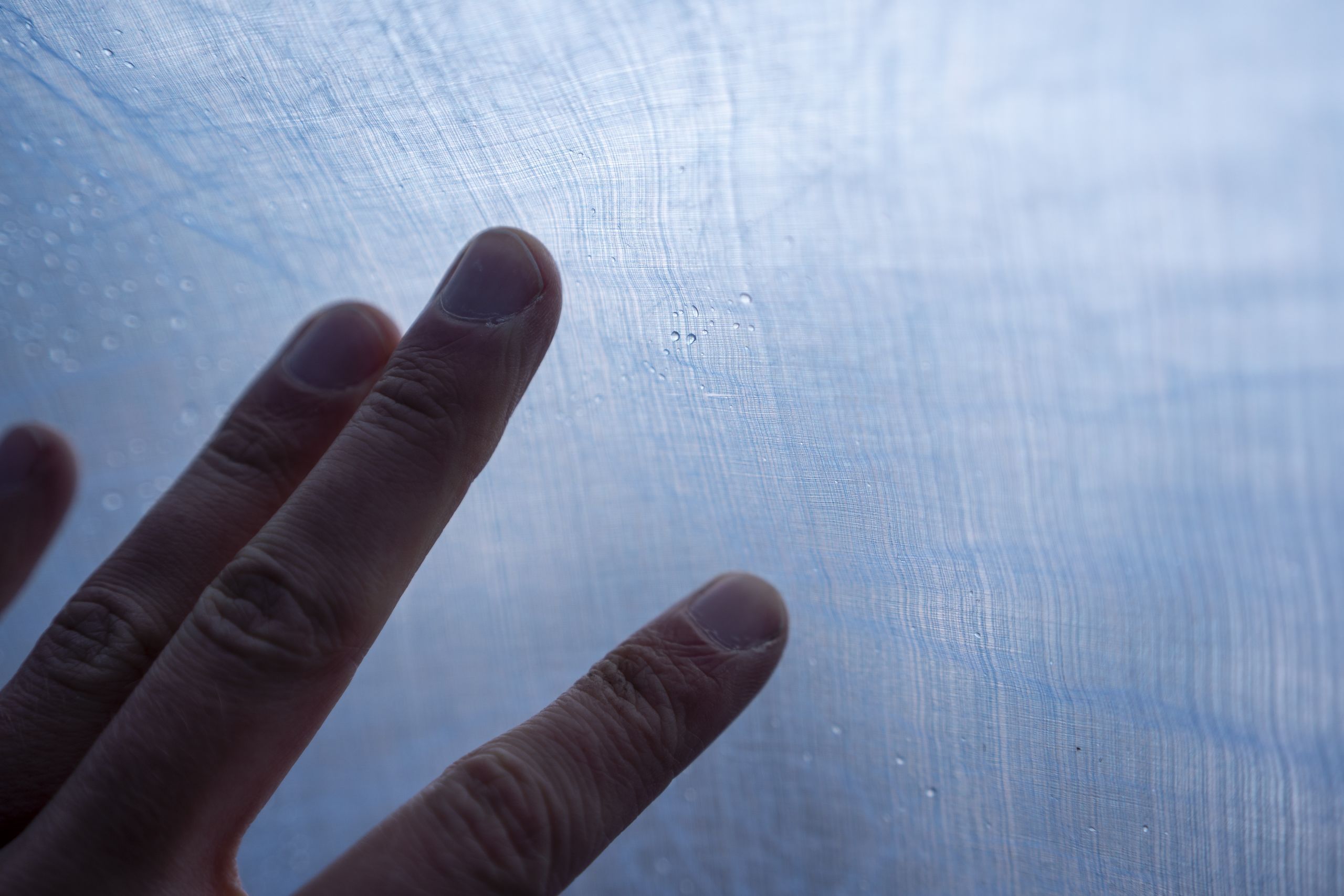
Durability
The use of DCF construction with time-tested thicknesses for the rainfly and floor suggests that the Offset Duo should have a decent lifespan. Although we haven’t taken it on a full thru-hike to test its durability firsthand, several factors instill confidence that it should last for a significant period.
The type of DCF used is the same as that on the ZPacks Duplex and other Zpacks tents, which are known to endure at least a solid thru-hike of a 2,000-mile trail. This longevity will vary based on how rough you are on gear, campsite selection, and whether you cowboy camp on top of your tent (please avoid this if you want to prevent pinhole punctures).
Furthermore, the overall fit and finish of the tent is excellent. Zpacks has improved their quality in recent years, addressing their past reputation for quality control issues, and we love to see it here.
Speaking of quality control, we can’t give full marks yet because we encountered a small tear in the fly of the DCF during our first setup of the tent. We are confident it did not occur when opening the shipping box, as we are always careful with any gear box.
Additionally, the included stuff sack would have shown a tear if the knife had pierced the box, but it was in perfect condition. The tear was only a quarter inch and can be easily patched with some DCF tape, making this a minor issue. Still, it prevents us from giving better marks, and it highlights the importance of carrying patch kits on the trail. Thankfully, Zpacks includes DCF tape in the box, so you should be prepared for any small issues that may arise.
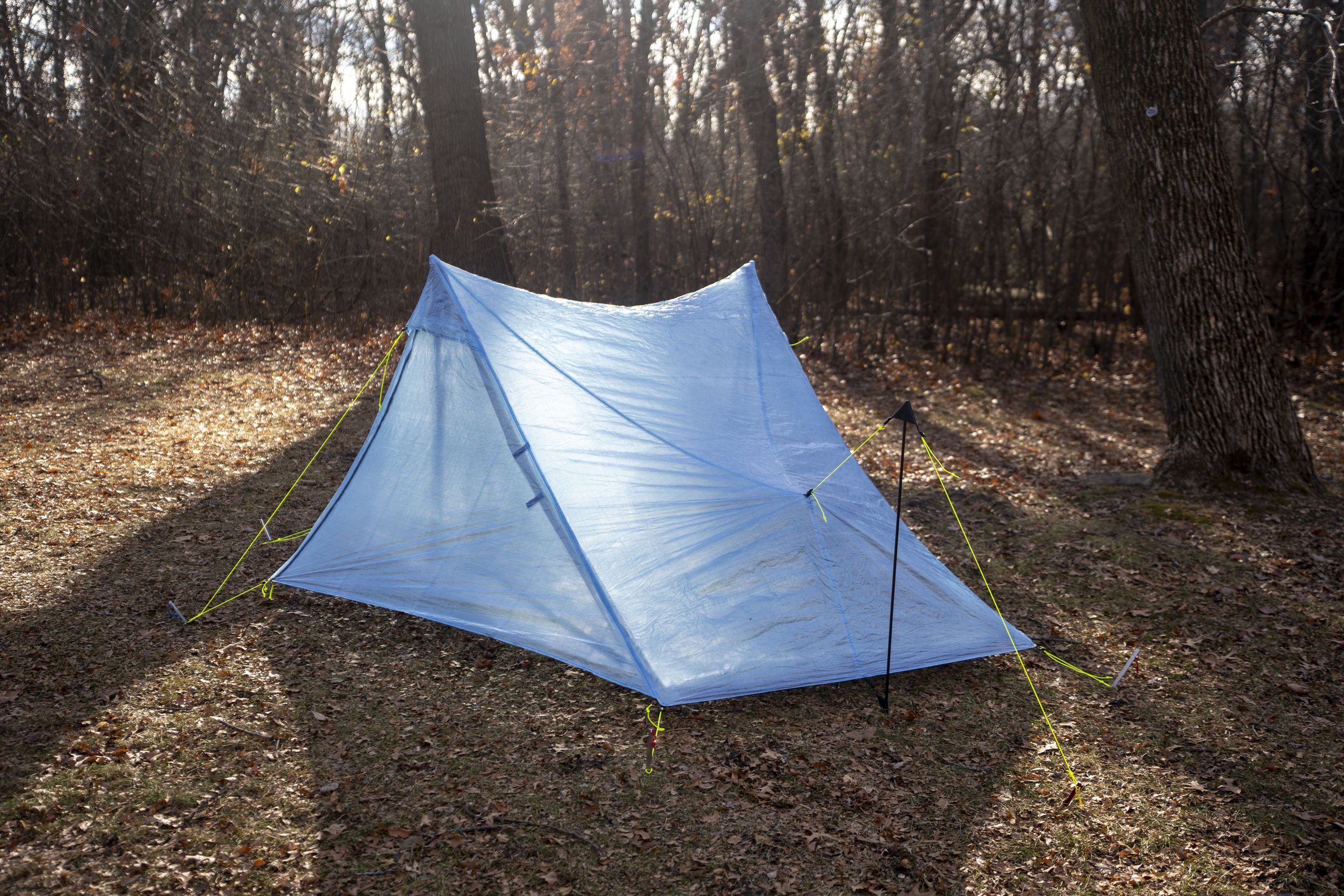
Should You Buy the Zpacks Offset Duo?
Although we want to consider this tent on its own, it’s difficult not to compare it to the popular Zpacks Duplex, as it seems to improve upon that tent in nearly every way. For that reason, the primary group of people we recommend the Offset Duo to are prospective Duplex buyers. Unless you’re counting grams or love some other aspect of the Duplex, we boldly claim that the Offset Duo is a better tent for most people.
That is, of course, if price isn’t an issue. The Offset Duo is one of the most expensive tents in our lineup and even costs a premium over the already pricey Duplex. For those sharing the tent on a thru-hike that lasts months, we believe investing in a comfortable sleeping experience is a wise use of your resources.
If you’re not focused on the lightest weights or are just searching for a tent for casual backpacking, we wouldn’t recommend this tent either. Not because it isn’t great for weekend excursions, but simply because it’s excessive.
We have other excellent tents better suited for casual use that we’d suggest, and the Offset Duo is priced for those investing in a long-distance trail. However, if you are looking for your next long-distance tent and love the design of the Offset Duo, we can give it a strong endorsement.
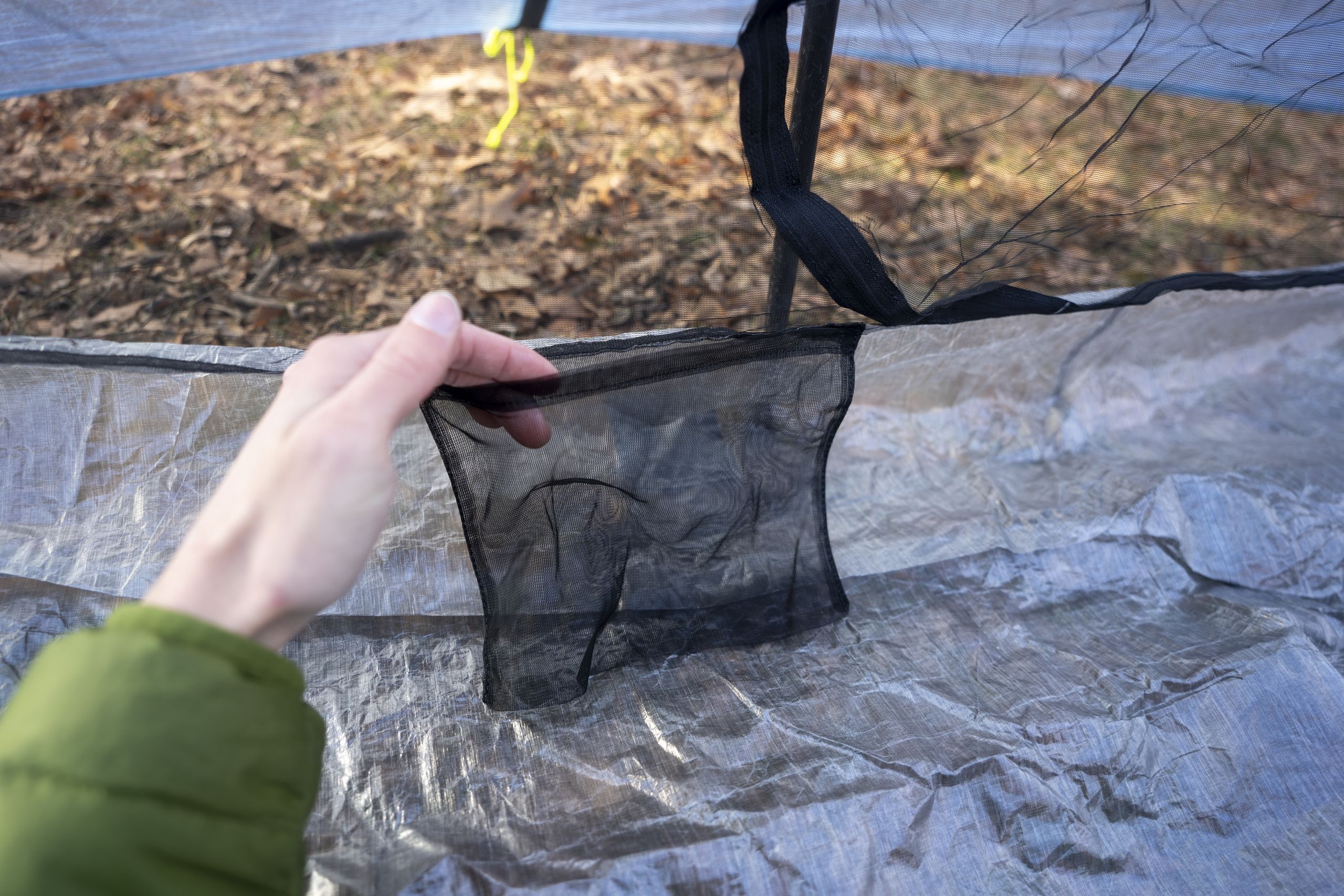
What Other Ultralight Tents Should You Consider?
If the Zpacks Offset Duo Tent isn’t the perfect fit, our best ultralight tents guide has many other options.
Durston X-Mid Pro 2+ Review: The Offset Duo and X-Mid Pro 2+ are remarkably similar in their goals, aiming to create a truly livable and well-designed ultralight tent for everyone. They both achieve this in different ways, and in our opinion, they both succeed fantastically. However, when it comes down to it, we enjoyed the X-Mid just a bit more for our style of backpacking. This doesn’t make the Offset Duo a bad tent; it simply solves certain problems in different ways, and we happen to slightly prefer a different solution. Both tents should offer excellent comfort, weather resistance, and ease of use. However, the X-Mid’s slightly more spacious interior, better wind resistance, easier setup, and lower price mean that we believe it’s the overall better choice for most people. Which one is right for you will depend on your own preferences, so if you feel more inclined toward one, go for it. Both are excellent.
3FUL Lanshan 2 Pro Review: If the Offset Duo is pricey enough to make you think ultralight gear isn’t for you, the Lanshan 2 Pro offers a compelling counterargument. While it may not be as featherlight due to its full silnylon design, it’s more than adequate when shared between two people and comes at a price significantly lower than the Offset Duo. What you receive for that price isn’t a subpar experience either; it’s a solid tent. We appreciate the comfortable interior, ample vestibules, and straightforward setup. The fabric may not be as durable, the vents can be somewhat cumbersome, and we found the door closure a little confusing initially, but overall, for a budget tent, we can’t think of a better option.
Zpacks Pivot Solo Review: If you appreciated the overall feel of the Offset Duo but don’t require the extra space for a second person, they actually offer an Offset Solo. However, for our preference, we favor the design of the Pivot Solo a bit more since it incorporates many of the qualities that make the Offset Duo / Solo excellent, but in a much lighter package with some enhancements. It uses two trekking poles internally to create space instead of relying on an external pole, features one L-shaped door to save weight, and is both lighter and more affordable. While it isn’t our favorite one-person shelter overall, it’s so close that for anyone who truly enjoys what Zpacks is doing with the Offset Duo, we believe the Pivot Solo will delight them.


